Moniek Bloks's Blog, page 187
March 7, 2020
Five brave royal women who should be remembered – #InternationalWomensDay
For this International Women’s Day I’d like to shine a spotlight on five royal women who should be remembered for their bravery.
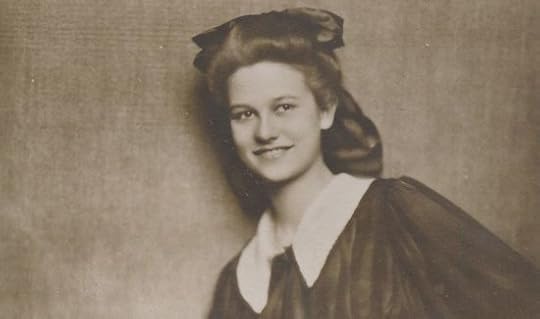 (public domain)
(public domain)The daughter of the assassinated Archduke Franz Ferdinand of Austria and his wife, Sophie, Duchess of Hohenberg tried to negotiate her brothers’ release from Dachau concentration camp with Heinrich Himmler, travelling all alone to the Gestapo headquarters in Berlin. She was interrogated for hours on end with her husband eventually being forced to join to Wehrmacht in exchange for Sophie and their children’s freedom.
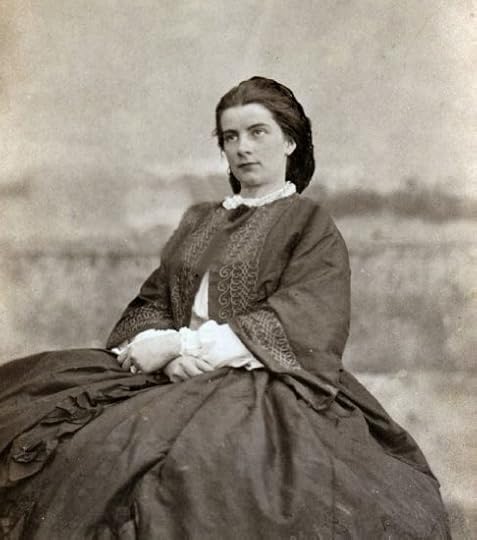 Maria Sophie in Bavaria (public domain)
Maria Sophie in Bavaria (public domain)The last Queen of the Two Sicilies went down in history as the heroine of Gaeta. Following bombings of the city, she refused an offer to have her residence marked with a flag so that it could be avoided. She dared them to shoot at her if they wanted to. She also ordered her soldiers down to the seaside rampart and told them to moon the fleet attacking them.
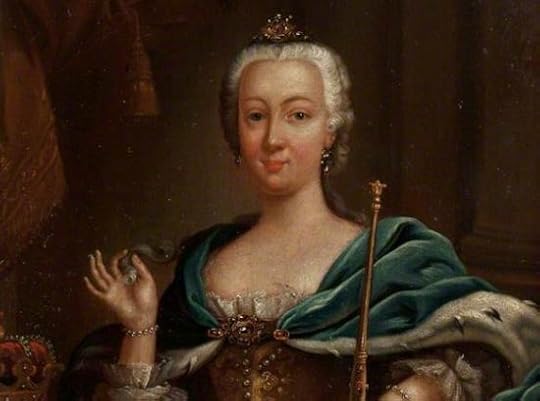 (public domain)
(public domain)Louise was married to the much older Charles Edward Stuart, known as the young pretender for his claim to the English crown. He violently abused her, and after one particularly vicious attack on her, Louise fled to a convent. She eventually found love and made a new life for herself.
 (public domain)
(public domain)Marie-Thérèse Louise of Savoy-Carignan
Better known as the Princess of Lamballe, Marie-Thérèse was one of Queen Marie Antoinette’s best friends. As France descended into the chaos of the revolution, Marie-Thérèse interrogated members of the Queen’s household to make sure they were still loyal to her. Marie Antoinette ordered her to leave for her own safety, but Marie-Thérèse refused to go, wanting to die alongside Marie Antoinette if necessary. After several weeks of imprisonment and continual interrogation, Marie-Thérèse was convicted by a people’s tribunal, and she was killed by a mob.
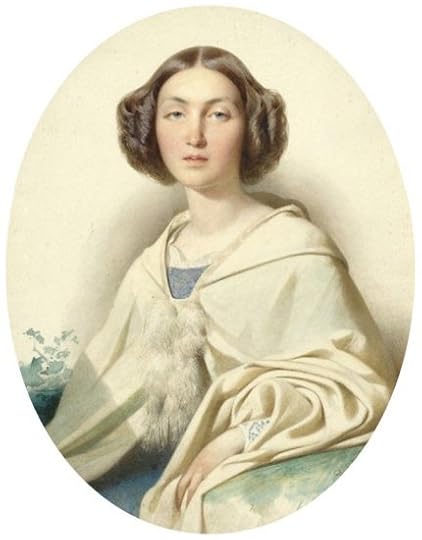 (public domain)
(public domain)Marianne was the daughter of King William I of the Netherlands and Wilhelmina of Prussia. She was married to her first cousin Prince Albert of Prussia in 1830. In 1845, she left her unfaithful husband, and they were formally divorced in 1849. By then, Marianne was pregnant by her former coachman Johannes van Rossum and their only son Johannes Willem van Reinhartshausen was born later that same year. She built a new life for herself, and when their son died at the age of 12, she had a touching monument built for him. Marianne and Johannes were eventually buried together, though his name is not mentioned on the tombstone.
The post Five brave royal women who should be remembered – #InternationalWomensDay appeared first on History of Royal Women.
March 6, 2020
Remains of Anglo-Saxon princess discovered by scientists in Kent
The remains of Princess Eanswith, also written as Eanswythe or Eanswide, have been discovered hidden inside the wall of a church in Kent. Historians say that the bones and teeth that were found are almost certainly those of the 7th century Princess and saint.
Dr Andrew Richardson, from the Canterbury Archaeological Trust, told the BBC: “It now looks highly probable that we have the only surviving remains of a member of the Kentish royal house, and of one of the earliest Anglo-Saxon saints.” The teeth and bones have been carbon-dated to the mid-7th century. Her bones show very little sign of injury, only a potential stress fracture in one foot bone and two damaged finger bones. An isotopic analysis will be carried out to reveal more about her life.
Her remains were moved several times after her death, and she was probably placed inside the wall to prevent the destruction of her relics. They were rediscovered in 1885, but they had no way of identifying the remains. A group of local historians began their quest to have the bones identified three years ago.
Eanswith was the daughter of Eadbald, who ruled as king of Kent from 616 to 640. Eanswith refused to marry a pagan King and became a nun instead. It is believed that she founded and became the abbess of what was probably England’s first nunnery. Eanswith life was to be short – she was probably still in her early 20s when she died, possibly of the bubonic plague. At least five miracles were attributed to her.
She is the patron saint of Folkestone and her feast day is celebrated on 12 September.
The post Remains of Anglo-Saxon princess discovered by scientists in Kent appeared first on History of Royal Women.
Queen Isabella and Bury St Edmunds Abbey
The Abbey Church of St Edmund was built between the 11th and 12th century, and the body of the martyred King Edmund was interred there in 1095. His shrine stood behind the high altar. The abbey church was once of the largest in the country, and it is now in ruins.
One of its notable events related to royal women relates to Queen Isabella, wife of King Edward II. She had returned from Hainaut on 29 September 1327 with an army to depose her husband. She had arrived clad in widow’s weeds and marched her forces to the abbey “with banners displayed.”1 She was given lodgings in the abbey, where she found a donation of 800 marks by one Hervey de Staunton. Isabella visited the shrine of St Edmund and gave her soldiers some time to rest before moving west to Cambridge. Isabella eventually succeeded in deposing her husband and putting her young son on the throne – while she was the power behind the throne.
The abbey did not survive the dissolution of the monasteries in 1539 and fell into ruins. The body of King Henry VIII’s sister Mary Tudor, who had been buried at the abbey in 1533, was moved to the nearby St. Mary’s church, where she still rests today.
Click to view slideshow.
The abbey ruins are open to the public and are owned by English Heritage.
The post Queen Isabella and Bury St Edmunds Abbey appeared first on History of Royal Women.
March 5, 2020
Female Heirs – Princess Elisabeth, Duchess of Brabant
With the introduction of absolute primogeniture in most European monarchies, there are now several Queens in waiting. With our new series Female Heirs, we’ll be taking a look at those young women who will one day rule in their own right. Today we’ll be taking a look at Princess Elisabeth, Duchess of Brabant.
Embed from Getty Images
On 25 October 2001, a daughter named Elisabeth was born to the then Duke and Duchess of Brabant, now King Philippe and Queen Mathilde of the Belgians. Belgium had introduced absolute primogeniture in 1991 for the descendants of King Albert II, and so Elisabeth was immediately second in line to the throne behind her father. The subsequent birth of two younger brothers Prince Gabriel (born 2003) and Prince Emmanuel (born 2005) did not see them overtake her position as the heiress. A younger sister named Princess Eléonore was born in 2008.
Embed from Getty Images
Princess Elisabeth’s baptism took place on 9 December 2001 in the chapel of Ciergnon Castle. Her godparents were her cousin Archduke Amedeo of Austria-Este and her aunt Countess Hélène d’Udekem d’Acoz.
Elisabeth began her education at the Dutch-language Sint-Jan Berchmanscollege in Brussels. She also speaks French, German and English. She is currently attending the UWC Atlantic College in Wales.
On 21 July 2013, her father became the new King of the Belgians after her grandfather abdicated in his favour. Princess Elisabeth became the new heiress apparent and became known by the traditional title of Duchess of Brabant. She is the first woman to hold the title in her own right.
Embed from Getty Images
She is being slowly introduced to royal duties, but she had refused to receive an allowance until she is completely finished with her studies. Elisabeth turned 18 years old in October 2019, and she invested with the Order of Leopold by her father. She also held a speech in which she said, “Eighteen years … A step that I take with great optimism. I realise that I still have a lot to learn. I will also focus on that in the coming years: trying to understand the world better – and helping to improve it, by giving the best of myself. The country can count on me.”
Embed from Getty Images
The post Female Heirs – Princess Elisabeth, Duchess of Brabant appeared first on History of Royal Women.
March 4, 2020
The Romanov Royal Martyrs: What Silence Could Not Conceal Book Review
The Romanov Royal Martyrs: What Silence Could Not Conceal is a book that caught my eye quite early on. It was originally released in Greek before being released in English in September 2019.
Although it claims to uncover many “unknown and unrevealed” facts from texts never published in English before, I have not found anything during my reading that I found particularly new or shocking. The book spends quite a bit of time on the religious background to the point where it becomes a bit “holier than thou.” Luckily it does not shy away from the mistakes made by Nicholas and Alexandra but the overall feeling of this book is the halo that hangs above them now as saints. The text is often quite wordy and I found myself skipping over letters that covered several pages (perhaps that’s why I missed the new information?!).
The best part of the book is surely the many photographs included but if you’re looking for an in-depth look at the family, this isn’t the book for you.
The Romanov Royal Martyrs: What Silence Could Not Conceal is available now in the UK and the US.
The post The Romanov Royal Martyrs: What Silence Could Not Conceal Book Review appeared first on History of Royal Women.
March 3, 2020
Marie Kinsky of Wchinitz and Tettau – Princess of Liechtenstein
Marie Kinsky of Wchinitz and Tettau was born on 14 April 1940 in Prague as the fourth of seven children of Count Ferdinand Carl Kinsky of Wchinitz and Tettau and his wife Countess Henriette, née Countess of Ledebur-Wicheln.
In 1945, the family moved to Germany. Marie began her education at an elementary school in Ering am Inn from 1946 until 1949. She then attended the Lioba Sisters’ boarding school in Württemberg and graduated from there eight years later. From 1957, Marie spent some time in England to improve her English. She then attended the Academy for Applied Arts at the University of Munich and graduated from there. She briefly lived in Paris to improve her French before going to work as an industrial designer in Dachau.
Embed from Getty Images
Her engagement to the Hereditary Prince of Liechtenstein – her second cousin once removed – was announced in 1965. They were married on 30 July 1967 at St. Florin’s in Vaduz. Marie wore a pearl-studded white silk gown with a long train from the French design house of Jacques Heim.1 Just 11 months after the wedding, Marie gave birth to her first child, a son named Alois.
Embed from Getty Images
A second son named Maximilian was born in 1969. A third son named Constantin was born in 1972. A fourth child and first daughter named Tatjana was born in 1973. Liechtenstein currently bars women from inheriting the throne, and so their daughter is not in the line of succession.
Embed from Getty Images
On 13 November 1989, her father-in-law died, making her husband the new reigning Prince of Liechtenstein and Marie its Princess. As the Princess of Liechtenstein, she is the Honorary President of the Liechtenstein Red Cross and patron of a society for people with special needs.
Embed from Getty Images
In 2004, her husband formally handed the reigns of government over to their eldest son in the form of a regency. She still appears alongside her husband at official events.
Embed from Getty Images
The post Marie Kinsky of Wchinitz and Tettau – Princess of Liechtenstein appeared first on History of Royal Women.
March 2, 2020
Virginia Kapoʻoloku Poʻomaikelani – The Queen’s Sister
Virginia Kapoʻoloku Poʻomaikelani was born on 7 April 1839 as the daughter of Princess Kinoiki Kekaulike of Kauaʻi and High Chief Kūhiō Kalanianaʻole of Hilo. Through her mother’s line, she was a granddaughter of Kaumualiʻi who ruled the island of Kaua’i before it was unified with the other Hawaiian islands under King Kamehameha I.
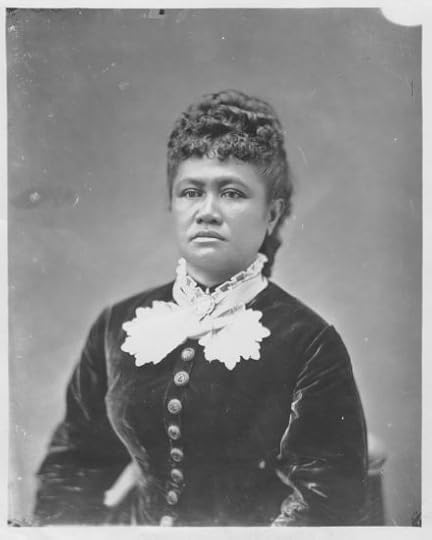 (public domain)
(public domain)Poomaikelani was the younger sister of Queen Kapiolani – who was married to King Kalākaua – and the elder sister of Victoria Kinoiki Kekaulike.
She was still only 15 years old when she married Hiram Kahanawai, who served as chief steward and butler in the royal household under King Kamehameha IV and Queen Emma from 1855 to 1863. Poomaikelani also served in Queen Emma’s household as a lady-in-waiting. Poomaikelani and Hiram did not have any biological children, but they did adopt Edward Abnel Keliʻiahonui, the second son of Poomaikelani’s sister Kekaulike.
When Poomaikelani’s brother-in-law was elected as King in 1874, they both left Emma’s service to join the new royal court. Her husband died shortly after of a heart attack – he was still only 36 years old. The new King granted Poomaikelani the title of Princess with the style of Her Royal Highness during his coronation in 1883. She acted as kahili (staff of state) bearer during the coronation. She was also made Governor of Hawai’i island in 1884 for which she received a salary. In addition, she was the Guardian of the Royal Tombs of the Royal Mausoleum from 1888 until her death.
During the last ten years of her life, she suffered from increasingly bad health. She suffered paralysis in her right leg and had to be carried around. She was unable to leave the house for her final years. She lived through the overthrow of the monarchy and died at Oahu on 2 October 1895 of heart failure. Her funeral service took place at St. Andrew’s Cathedral, where she had also regularly attended services, and she was interred in the Royal Mausoleum of Hawaii. She was still only 56 years old, but she had outlived both her husband and her adopted son.
A newspaper article after her death described her with the words, “She was a pious woman and was well-liked by all who knew her. Deceased was unassuming, being generally seen in her own carriage with a single horse driving out to Waikiki.”1
The post Virginia Kapoʻoloku Poʻomaikelani – The Queen’s Sister appeared first on History of Royal Women.
March 1, 2020
Barbara of Portugal – A powerful influence
Barbara of Portugal was born on 4 December 1711 as the eldest child of King John V of Portugal and Archduchess Maria Anna of Austria. She was given the name Barbara in honour of Saint Barbara, the saint of her birthday. She was briefly heiress presumptive to the Portuguese throne until her mother gave birth to a son.
Barbara received an excellent education, and she was a talented musician. She was a student of Domenico Scarlatti from an early age until his death. From her teenage years, she was considered as a possible bride for King Louis XV of France, but she was eventually removed from the list.
On 20 January 1729, Barbaria married Ferdinand, Prince of Asturias, the future King Ferdinand VI of Spain. At the same time, Barbara’s brother Joseph married Ferdinand’s half-sister Mariana Victoria of Spain. Barbara was apparently pockmarked, but she gained the love and trust of her husband. He soon came to completely depend on her advice and support. Barbara’s primary aspiration was to support the good relations between Spain and Portugal, and she remained in close contact with her father. During their time as King and Queen in waiting, they were kept in the background by Ferdinand’s powerful stepmother Elisabeth Farnese. Ferdinand’s father Philip had long been prone to melancholy and had left the government to his wife.
Ferdinand too suffered from ill-health, and their isolation allowed Barbara to cultivate a considerable influence over her husband. Unfortunately, they did not have any surviving children. They were continually spied upon by Elisabeth’s supporters. When Philip died in 1746, the French ambassador said, “It is rather Barbara who succeeds Elisabeth than Ferdinand succeeding Philip.”1 Barbara’s sole purpose now was to keep her influence over her husband.
Elisabeth would not be put aside so easily. Ferdinand treated his stepmother kindly, and she moved into a rented mansion with two of her children. By 1747, she was openly criticising the new regime to Barbara’s frustration. Elisabeth was exiled to La Granja, where she would stay for 12 years. She made the best of her time there by throwing herself into the building of a new palace. She managed to gain some support back but was kept firmly away from the court. Her health began to fail, and she became increasingly blind and lame. In 1750, Barbara married Elisabeth’s daughter Maria Antonia to the future Victor Amadeus III of Sardinia.
Barbara’s influence over the King remained, and the ministers showed her all the important papers because “only she knows what ought to either to be said to or hidden from the king.”2 Barbara continued to “sway him as she pleases, with as much power, but much less difficulty, than ever the Dowager [Elisabeth] did the late King, his father.”
In later life, Barbara became asthmatic and obese. Without much sporting interest, Barbara devoted herself to the arts and music. Both Barbara and Ferdinand loved large theatres displays with hundreds of performers. Barbara died on 27 August 1758, plunging Ferdinand into deep mourning. He would follow her in death on 10 August 1759. Barbara was buried in the Convent of the Salesas Reales, which she had founded.
Elisabeth was made interim regent of Spain until the arrival of her own son, now King Charles III.
The post Barbara of Portugal – A powerful influence appeared first on History of Royal Women.
February 29, 2020
Female Heirs – Catharina-Amalia, Princess of Orange
With the introduction of absolute primogeniture in most European monarchies, there are now several Queens in waiting. With our new series Female Heirs, we’ll be taking a look at those young women who will one day rule in their own right. Today we’ll be taking a look at Princess Catharina-Amalia, Princess of Orange.
Embed from Getty Images
The current King of the Netherlands was born on 27 April 1967, and he became the Prince of Orange on 30 April 1980, when his mother Beatrix succeeded her mother as Queen. When he married Máxima Zorreguieta in 2002, she did not become Princess of Orange due to a recent change in the law, which limited the title to the heir apparent alone. On her wedding day, she was granted the titles Princess of the Netherlands and Princess of Orange-Nassau with ‘Her Royal Highness’ as the style of address.
They had three daughters together, Catharina-Amalia was born in 2003, Alexia was born in 2005 and Ariane was born in 2007. When Willem-Alexander succeeded his mother on 30 April 2013, his eldest child automatically became Princess of Orange as the title no longer differentiated between a male or female heir. Catharina-Amalia is the first woman to hold the title in her own right, despite the Netherlands having had three Queens regnant before her. Mary of Baux did hold the title as sovereign Prince of Orange from 1393 to 1417.
Embed from Getty Images
Catharina-Amalia was born on 7 December 2003 at 5.01 PM in the Bronovo Hospital in The Hague. She was baptised on 12 June 2004 with Crown Princess Victoria of Sweden, Baroness Rengers-Deane, Prince Constantijn, Martin Zorreguieta, Herman Tjeenk Willink and Marc ter Haar as godparents. Her full name is Catharina-Amalia Beatrix Carmen Victoria. Catharina-Amalia and her sisters attend mayor functions, such as King’s Day and the press moments, but not much more.
Embed from Getty Images
Catharina-Amalia’s first major function, as well as her sisters’, was their grandmother’s abdication and their father’s accession. Catharina-Amalia was just ten years old at the time. She has been attending a school like a regular child since 2007. She reportedly already speaks two languages, and she speaks some Spanish, no doubt taught to her by her mother! She will assume a seat in the Advisory Division of the Council of State of the Netherlands upon reaching the age of majority at 18 and is expected to become Queen regnant someday.
Embed from Getty Images
The post Female Heirs – Catharina-Amalia, Princess of Orange appeared first on History of Royal Women.
February 28, 2020
Burying a Duchess – Cecily Neville at the Church of St Mary and All Saints
Cecily Neville was born on 3 May 1415 at Raby Castle as the daughter of Ralph Neville, 1st Earl of Westmorland, and Joan Beaufort, Countess of Westmorland. With her marriage to Richard Plantagenet, 3rd Duke of York in 1429, she would soon find herself mixed up in the Wars of the Roses. She and Richard went on to have 12 children together, though not all would survive to adulthood. Most notably, she became the mother of Kings Edward IV and Richard III but also of Margaret of York, Duchess of Burgundy.
But by 1486, 10 of her 12 children were dead, and the Tudor dynasty occupied the throne with her granddaughter Elizabeth as Queen consort. She was by then living at Berkhamsted in a strict religious regime. She awoke at 7 in the morning, her chaplain said matins while she dressed and then he administered Mass. Cecily then visited the castle chapel to hear divine service, followed by two more low Masses. During dinner, she listed to religious readings. After dinner, she attended to business for an hour. She then slept a little bit before evensong. During supper, she recited the text of the sermon she heard at dinner. She was in bed by 8 o’clock.
Cecily began dictating her will on 4 April 1495. She asked that her body would be buried beside her husband at Fotheringhay Church. She also left several religious items to the church. The will was signed and sealed on 31 May 1495, and she most likely died that very same day.
Cecily was indeed buried at Fotheringhay with her husband with a papal indulgence – to “reduce the amount of punishment one has to undergo for sins” – around her neck. She had arranged for items to be sold to pay to have her body taken for burial to Fotheringhay. Her husband’s tomb had only just been arranged a decade earlier by her son King Edward IV, but when Queen Elizabeth I visited the church in 1566, she found it disastrously damaged. She ordered the memorials – her husband’s uncle Edward, Duke of York and Cecily and Richard’s son Edmund were also interred there – to be fixed. Commissioners were probably unaware that Cecily’s husband was buried there and only found out when they began to dig up their tomb. Richard and Cecily were reburied together in a limestone and chalk tomb, but Edmund was not mentioned by the commissioners. It is likely that several of Cecily’s children who died as infants were also buried there, but no mention is made of them either. The papal indulgence was found during the exhumation in 1573 tied with a silk ribbon around her neck. Though Elizabeth is often credited with paying for the new tombs, it is also likely that it was one Sir Edmund Brudenell – one of the commissioners – who organised and paid for the tombs. One for Cecily and her husband, the one on the opposite side for his uncle Edward, Duke of York.
The plague only mentions Cecily as wife to Richard, Duke of York and daughter of Ralph, Earl of Westmorland. However, she was also the mother of two Kings, and the grandmother of a Queen, along with being the ancestor of all subsequent British monarchs.
Click to view slideshow.
The Church of St Mary and All Saints in Fotheringhay is a bit out of the way and difficult to reach without a car. However, it is open daily and there is no entrance fee (though donations are appreciated!). It is quite the hidden treasure with its beautiful York window and the two amazing tombs. Do not miss it if you are ever in the area.1
The post Burying a Duchess – Cecily Neville at the Church of St Mary and All Saints appeared first on History of Royal Women.



